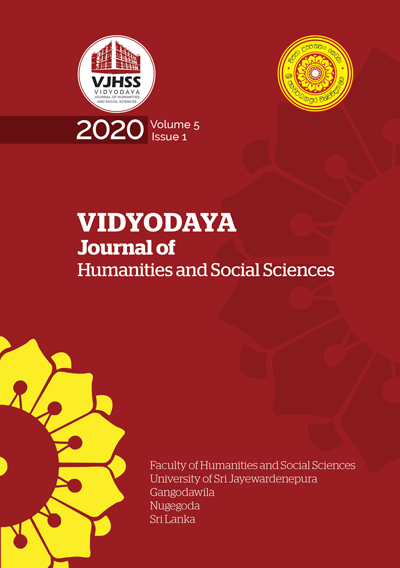Traditional Knowledge used in Soil Taxonomy and Identifying Degradation: A Case Study in Knuckles Range, Sri Lanka
Abstract
Traditional Knowledge is an experiential knowledge built by people within a long duration and this knowledge has been decaying with time. Traditional soil taxonomies or classifications are most important in the process of identifying soil degradation. Therefore, this study was focused to ascertain the traditional knowledge used in identification of soil erosion and classification of soil in the Knuckles range of Sri Lanka. Seven Grama Niladhrari Divisions out of 56 laid in Knuckles range were selected as the study area. Out of 346 families living in the study area, 120 families were selected by employing simple random sampling method. Data was collected through questionnaires, interviews, observations and transect walks while international and local soil classification methods were applied for scientific validation. In this study four (04) traditional methods used to classify the soil was identified. Based on 6 different indigenous criteria, three (03) main soil types and 15 sub soil types were identified. Further, types of components existing in each indigenous soil type were identified using a soil index which comprises of 16 type of materials while nine (09) soil samples and nine (09) soil profiles were scientifically validated through international and local soil classification. The traditional soil taxonomy found in this research can be applied for identifying and minimizing the degradation of soil and securing the quality of the environment. Comparative studies between the scientific and traditional science like this would expose and disseminate more and more possibilities on future studies.



